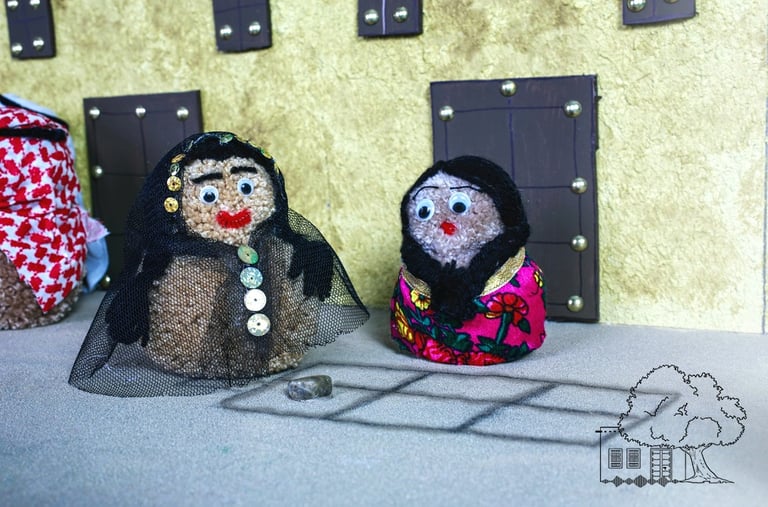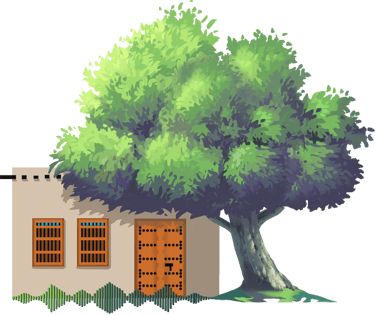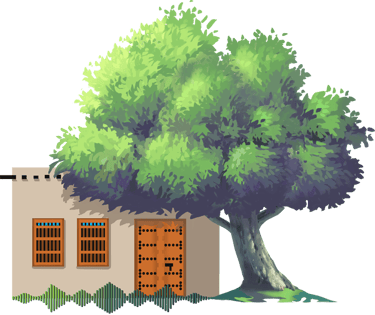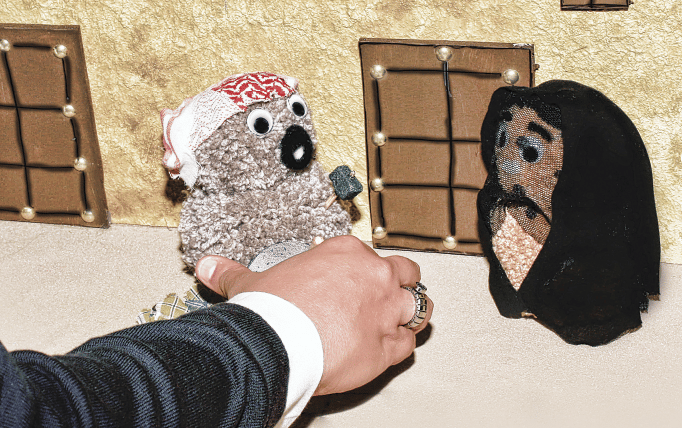ﺍﻟﺪﻭﺍﻣﻪ The Whirlpool Game
A merry-go-round is a conical piece of wood with two ends: a wide end and a pointed end. It is smaller than a fist. A nail is placed at the pointed end to serve as its axis during rotation. There are three types:
1. The regular merry-go-round
2. The noria merry-go-round
3. The Mughal
Whenever a merry-go-round is mentioned, the word "mashbal" is often mentioned alongside it.
The "mashbal" is a string (hisi) approximately one meter long, which is wrapped around the merry-go-round from its first end, starting from its nail to the top. The second end, which is attached to a small piece of wood or iron, is held between the ring and little fingers. The player then throws the merry-go-round, causing it to land on its nail. It spins on its own, leaving the "mashbal" suspended between the two fingers.
It is a fun and entertaining game played by boys individually or in organized groups. One of its games is "faloosh." When the group agrees to play flush, one of them places their whirligig on the ground as a target, and everyone else attempts to pierce it with their whirligig nails. The hole is called an anabub (pipe). A player who doesn't hit the target must catch their whirligig with a pickaxe and pick it up from the ground while it's still spinning. Otherwise, their whirligig will be exposed to the flush and the anabub. Some players are creative in playing with it, making it spin in their hand. The best whirligig is the "zikid" whirligig, which "bends" while spinning.

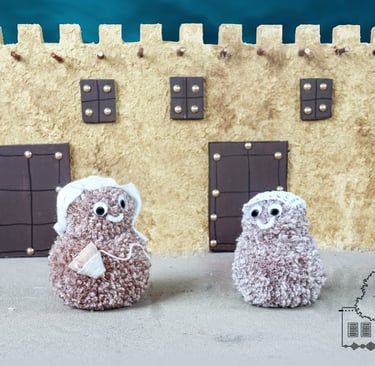
المُقْصي Scissors
It is a fun game played by boys in a systematic group during the day. The game includes:
1. The scissors: A piece of wood with pointed ends, no more than 15 cm long and 3 cm thick.
2. The mataa'a: A thick stick, roughly the same thickness as scissors, approximately 60 cm long.
3. The kur: A horizontal hole in the ground the length of the scissors.
4. The shish: A line drawn on the ground near the kur.
Game Description:
The players are divided into two teams, and then a draw is held to determine which team will win the game. The game is as follows:
The leader of the group (their eldest) stands near the ball and throws the scissors away from it. He then asks a member of one of the teams which word they would like to use (either "Allah" or "his sword"). They say "Allah" for example. The leader then flips the object on the ground, starting from the ball and reaching the scissors, saying "Ya Allah" the first time and "Ya Sayfah" the second time. This continues until the object touches the scissors. If the word "Allah" matches the touch, the team that said it wins and the game is theirs. If the word "Safah" matches, the other team wins. At this point, the winning team members stand by the ball, and a member of the team places the scissors in the ball so that its upper end is raised. He then strikes it lightly with the scissors, causing it to rise slightly in the air. Before the player can land on them, he strikes them with a powerful blow, sending them flying like a bird soaring into the air. All members of the opposing team, distributed around the perimeter of the area where they are likely to land, are waiting for them. Each of them attempts to catch them in their hand or in their dishdasha or qatra. If one of them catches them, their team wins a point. If they land on the ground, someone nearby picks them up and throws them powerfully, sending them into the "mata'a" (a ball placed above the ball). If they hit it without overlooking the ball—that is, without drinking—the team wins a point. If they miss, a point is scored against them.
The winning team, which holds the ball, scores a point each time it wins. Every three points are called a "soul" by the boys. Someone says, "Buruhain" (two souls), "bu thalatha" (three spirits), or "bu saba'a" (seven souls). The opposing team must defeat the winning team until all of its "souls" are eliminated. The game continues. The "Ma Too'" game is also played in the same way, but without digging holes. The stick is hit directly from the hand. The player bends to the ground and places the pointed end of the ball on it, holding on to it while his right hand is busy holding the stick at the other end. After somewhat stabilizing himself, and with extreme agility, he pulls the stick, which in turn pulls the sififa with it. The ball spins, stumbling as it spins, swaying left and right. This is where the game becomes enjoyable and enjoyable for its fans. As the ball spins, its owner attacks it with successive blows, and any blows of the sififa are merciless. You will see it "moan" (groan) and make a whistling sound from the force of the blows. The more the ball moan, the higher its value, and its fans boast about it, and it achieves a prestigious position among the nightingales of the neighborhood boys. Those who wish to witness this game these days will find it completely extinct.
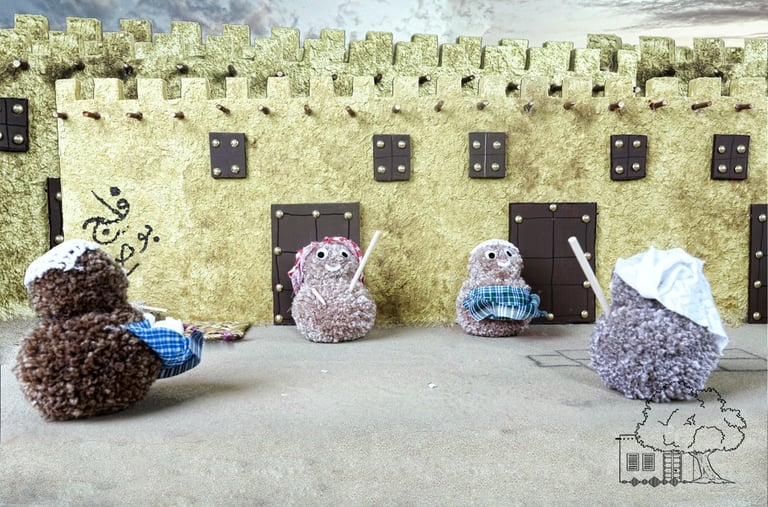

الكافود The kafoud
As Kuwaitis know it, it's a palm stick stripped of its fronds and thorns. This stick is straight at the top and curved at the bottom, with a wide end. It's used as a fun toy for children, and some children are creative in decorating it. When a child receives it, they bend it and connect its two ends with a strong, taut thread, further curving it. They then take scraps of worn-out colored fabric and attach them along the thread. Some people tie a small stick at its upper end, called a "sakkan," and another at its lower end, connecting them with decorative threads, creating a beautiful, colorful shape. They hold it by the upper stick and strut around the streets, strutting with swagger.
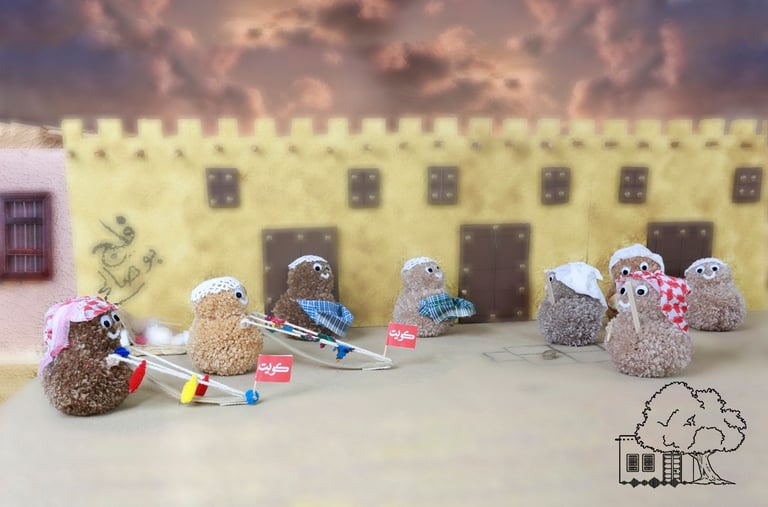

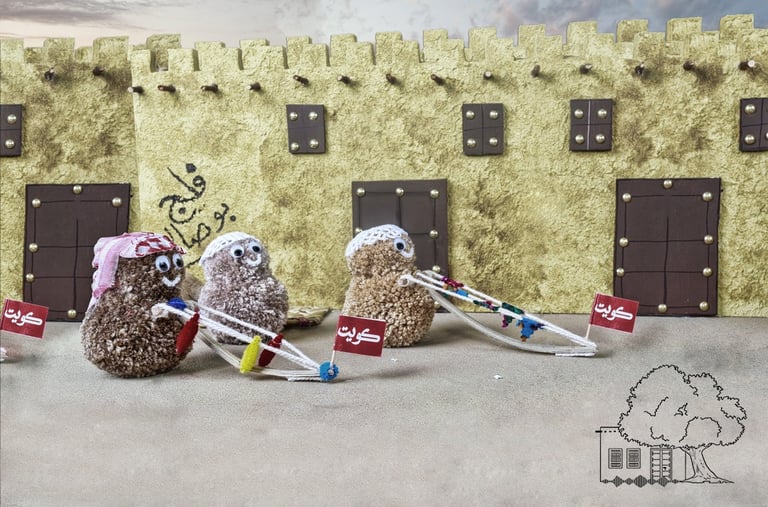

الدرباحة The Darbahah Game (Boys):
It's a circular frame primarily used for bicycle wheels. It's called a darbahah because, in our colloquial dialect, we call anything that rolls on the ground "tardharh" (rolling), hence the name. They use sticks to hit the darbahah to make it roll and steer it in any direction. Some boys use a strong wire (sem beer) that is looped around the darbahah. When the wire is pushed forward, the darbahah rolls. It's similar to owning a car or bicycle today. Boys also race each other on the darbahah over a certain distance, with each player trying to steer their darbahah toward the darbahah of their classmates without knocking them over. They are then considered to be ahead.
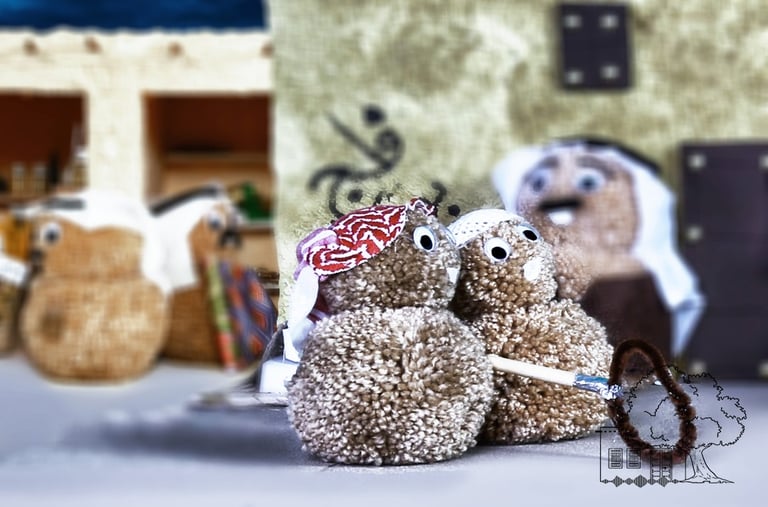

The Game of Tricks (Girls):
It's a game between two or more players, played in multiple stages. A rectangle is drawn on the ground, divided into six squares or houses. The player stands at the first square, holding a flat piece of stone or pottery called a "rababaza." Her partner, who is dueling with her, stands outside the squares, waiting for her turn. The player begins by throwing her rababaza into the first house, then hops around, kicking the rababaza with her foot to the second house. She follows it with a hop, then to the third house, then to the fourth, until the last, provided she reaches her starting point without stepping over the dividing lines, landing with her other foot in one of the houses, or letting the rababaza rest on a line or stepping outside of it. If any of these things happen, she fails in her game, and it is the turn of the second player to exchange performance. After that, the game is repeated, throwing her stone into the second house and performing the same role she played in the first round, then to the third house, then to the fourth, until the sixth house. In all rounds, she hops through all the squares on one foot. Then she stands at the first house with her back to it and throws her stone at one of the houses. If it lands in one of the houses, it becomes hers, and she has the right to step on it with both feet as she passes by. Her random throwing is repeated until she owns all the houses where the stone lands. At that point, the game ends and she starts over again. The game continues, taking turns with her friends.
